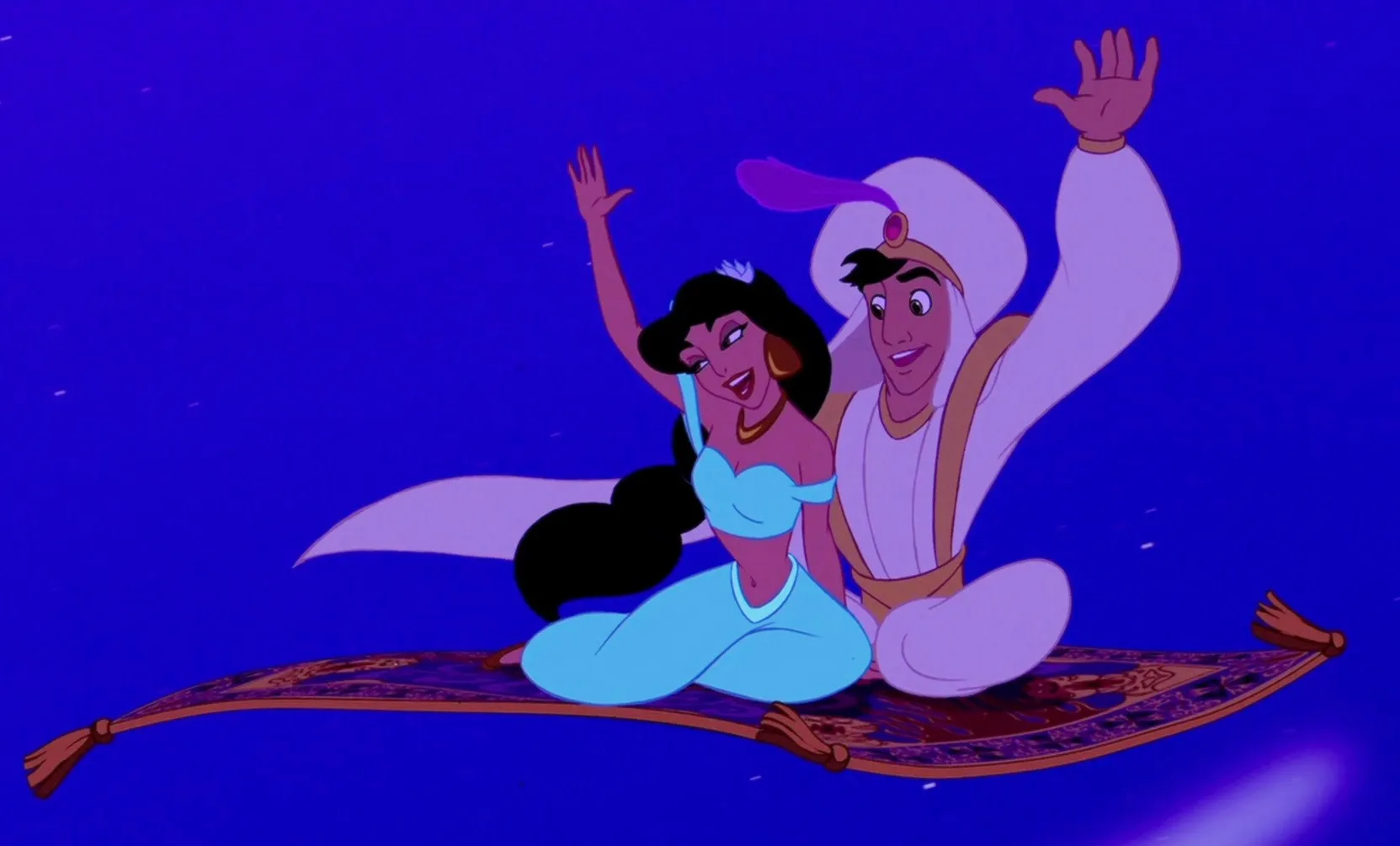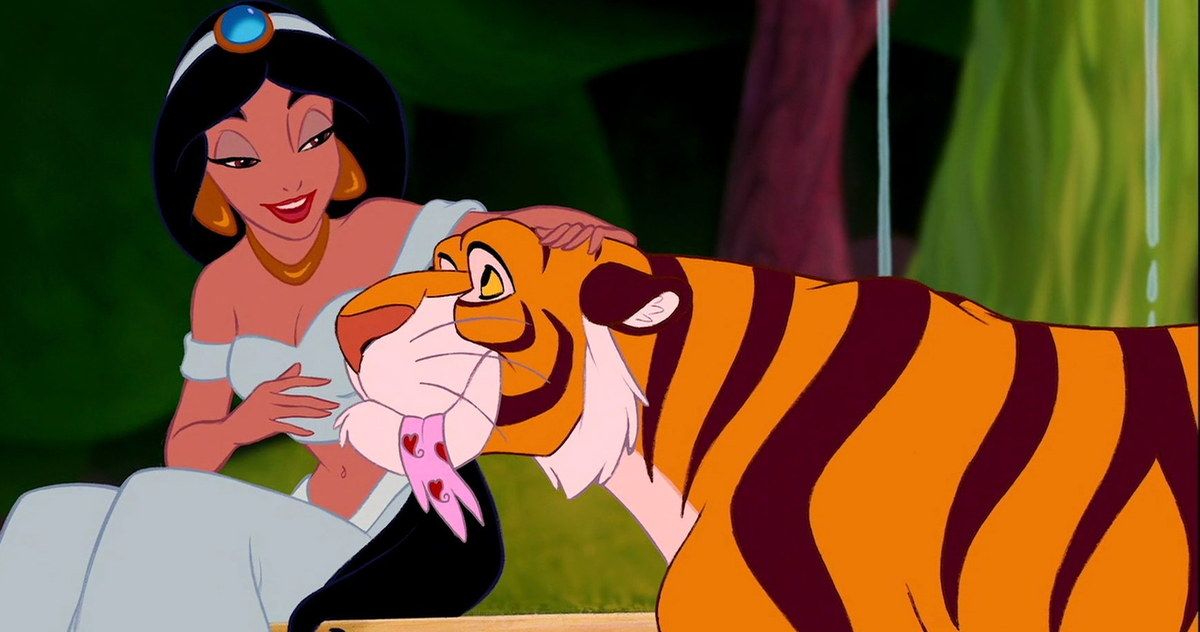Disney's Aladdin (1992): A Whole New World of Feminist Agency?
Disney’s Aladdin: Princess Jasmine’s feminism
Disney’s 1992 film Aladdin is a firm classic. There’s so much in the story that lends itself to visual spectacle - vast amounts of magical wealth, a foreign place and time, a star-crossed (but ultimately fulfilled) romance, and music from the ever-fantastic Alan Menken. The story of Aladdin’s place in popular media throughout history is also in fact a complex and quite mysterious one, too. Aladdin is best recognised in literature for its place in A Thousand and One Arabian Nights, as one of the so-called “orphan tales” apparently added to the Nights separate from the manuscript editions of the text which exist. And so, the story by its very nature has a rich capacity for inducing wonder in its audiences.
The adaptation removes the figure of Aladdin’s mother, in favour of expanding the role of the princess (whom they rename as Princess Jasmine) as the principal female lead. Unlike her counterpart in earlier retellings of the Aladdin tale, who are undeveloped as characters and exist primarily as plot devices in Aladdin’s personal saga, Princess Jasmine is a headstrong woman, who knows what she wants from her life, and is willing to be proactive in making those things happen. Generally speaking, I think it’s safe to say she’s a positive female character (albeit the film’s only significant female character) for audiences to watch, especially younger ones.
However, those changes don’t necessarily make the film a strongly feminist piece - yes the expansion of the role of the princess is important because Jasmine is a fully fledged character with powerful emotions, ethical motives, who creates stakes in the narrative through her actions, but she does also become relegated to the position of simply being Aladdin’s love interest at many points in the film. The film is named after him, at the end of the day. And whilst the actions of Princess Jasmine arguably catalyse a lot of the action of the story, by escaping from the palace and meeting Aladdin in the first place in order for him to fall in love and go on a journey of self-discovery, her character isn’t really given space to grow in the way Aladdin is.
On the one hand, that’s not really a problem, because her personal convictions and her desire to stand by her moral code means that she won’t allow others to change her - that’s a core part of her character and particularly her appeal as a headstrong female character. On the other hand, the independence and agency that Jasmine aspires to come to her, by the end of the film, on the terms of the men around her. She marries a man who has won her over, and she’s allowed to do so because her father, the sultan, has decided finally that he will allow such a thing to happen. Jasmine’s life to a large, if not immediately obvious, extent is dictated by male decision-making.
However, that doesn’t automatically make Disney’s film a feminist flop. Certainly there are problems with the presentation of “the independent woman” and her struggles to escape the clutches of an oppressive patriarchal system, but Jasmine is a character with some truly admirable qualities. She knows what she wants, and takes initiative to achieve those aims, regardless of the obstacles that try to prevent her success. She will call out and defy systems of oppression. She respects her own self-worth, and expects others to do the same. She is unafraid of her own emotions, and will express them freely. She has a great capacity for love.
Looking back on the history of the story in popular culture then gives us a newfound appreciation for Princess Jasmine. Disney is not without its sometimes controversial and problematic presentations of people in its films (take the depiction of Native Americans in Peter Pan for example), but we cannot deny that those films have also had a hugely positive impact on young people, in its depiction of women, increasingly so with more recent films like Moana or Raya and the Last Dragon. And so, Disney’s Aladdin takes us from a silent princess who exists as barely a plot device to Princess Jasmine, and gives us a chance to see how the art of our contemporary lives is so crucial to understanding our place and our value in the world we live in.




Comments
Post a Comment